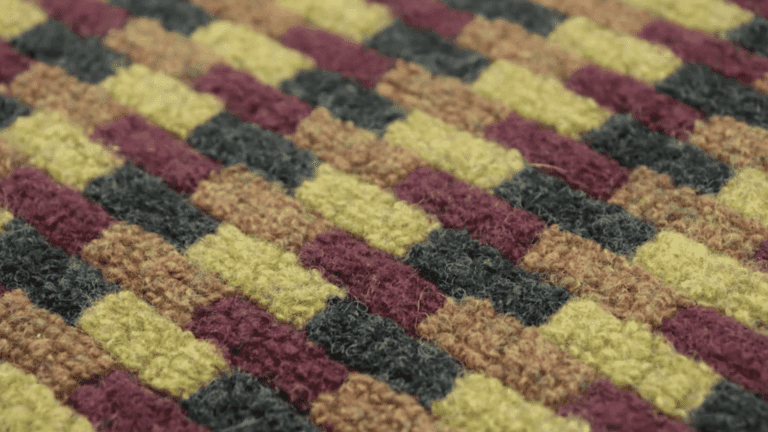A 4-month-old fights sleep like it’s their full-time job. Sound familiar to any parent?
Parents have tried everything – rocking, singing, even that expensive white noise machine. But nothing seems to work consistently. The problem isn’t the baby or anyone’s parenting skills. The secret lies in understanding wake windows 4 month old babies need.
These specific time periods between sleep can make or break a little one’s rest. When parents get the timing right, sleep becomes easier for everyone.
This blog will show precisely how to use wake windows to create a routine that actually works. Babies will sleep better, and parents will finally get some rest, too.
What Are Wake Windows and Why Do They Matter?

Wake windows are the periods when a baby stays awake between sleep sessions. Think of them as the sweet spot – not too short, not too long. For 4-month-olds, these windows typically last between 1.5 to 2.5 hours.
But why do they matter so much? A baby’s sleep drive builds up during wake time. Too short a window means they’re not tired enough to fall asleep easily. Too long, and they become overtired and cranky. This makes falling asleep even harder.
The magic happens when parents hit that perfect timing. Babies settle down faster and sleep more soundly. They wake up happier too. It’s like catching a wave – get the timing right, and everything flows smoothly.
Most parents don’t realize their baby’s fussiness often comes from incorrect wake windows. Once they understand this concept, sleep troubles start to fade away. The whole family benefits from better rest.
The Art of a Soothing Bedtime Routine
A good bedtime routine signals to babies that sleep time is coming. This helps their little bodies wind down naturally. The routine should start about 30-45 minutes before the target bedtime.
Key Elements of an Effective Routine
Keep activities calm and predictable. Bright lights and loud sounds work against sleep. Dim the lights as bedtime approaches. This helps the body produce melatonin, the sleep hormone.
A typical routine might include a warm bath, gentle massage, or quiet feeding. Reading a short book or singing a lullaby works well too. The same order each night helps babies know what comes next.
Timing Matters Most
Start the routine when the baby shows early sleep signs. Waiting too long creates an overtired baby who fights sleep. The routine should feel peaceful, not rushed.
Some babies need longer routines, others prefer shorter ones. Pay attention to what works. If a baby gets more stimulated during certain activities, skip them. The goal is creating calm, sleepy feelings.
Consistency beats perfection every time. Even busy nights deserve some version of the routine.
Decoding Your Baby’s Sleep Cues – When It’s Time for a Nap

Learning to read a baby’s sleep signals makes the difference between easy naps and battles. Wake windows 4 month old babies display communicate their tiredness long before they start crying. The trick is catching these early signs.
Early Sleep Cues to Watch For
The first signs are subtle. A baby might stare off into space or become less active. Their movements slow down, and they stop engaging with toys or people around them. These are the golden moments to start heading toward the crib.
Yawning comes next, followed by eye rubbing. Some babies pull at their ears or arch their backs. Others get a glassy-eyed look or start fussing mildly. These are still manageable cues if parents act quickly.
When the Window Closes
Miss those early signs, and things get harder. Overtired babies become cranky and fight sleep. They might cry, throw themselves backward, or refuse to settle down. Their bodies flood with stress hormones that make falling asleep nearly impossible.
Each baby has unique patterns. Some get hiccups when tired. Others become clingy or want to nurse constantly. Pay attention to what individual babies do consistently.
The goal is putting babies down drowsy but awake during those early cue moments. This teaches them to fall asleep independently while avoiding the overtired zone that makes everyone miserable.
Crafting the Perfect Nap Schedule for Your 4-Month-Old
Most 4-month-olds need 3-4 naps each day. The total daytime sleep should add up to 3.5-4.5 hours. This might sound like a lot, but it’s what their growing brains need.
Here’s what a typical day looks like:
Sample Schedule:
- Morning nap: 9:15 AM – 10:15 AM (1 hour, after 2.25 hours awake)
- Afternoon nap: 12:45 PM – 1:45 PM (1 hour, after 2.5 hours awake)
- Late nap: 4:15 PM – 4:45 PM (30 minutes, after 2.5 hours awake)
Individual naps can range from 20 minutes to 2 hours. However, never let any single nap go beyond 2 hours. This prevents night sleep problems. Short naps aren’t always bad – sometimes that’s all a baby needs. The key is watching for sleep cues.
Yawning, rubbing eyes, or getting fussy means it’s time for sleep. Miss these signs, and the window closes. Then parents face an overtired baby who fights sleep.
Around 5 months, some babies start dropping to 3 naps.
Watch for signs like fighting sleep or being fussy after naps. This transition happens gradually. One day they might skip the late nap, then go back to needing it. Understanding wake windows 4 month old babies need helps parents time naps perfectly.
When wake windows 4 month old schedules work well, the whole family sleeps better. Consistency makes all the difference.
Click here to download a sample timetable PDF
Coming Over the Problem of Sleep Regression

Sleep regression hits most families around 4 months. It feels like taking two steps backward after making progress. Babies who once slept well suddenly wake up frequently or fight naps. This happens because their sleep cycles are maturing and becoming more adult-like.
Just know that this phase is temporary. Most regressions last 2-4 weeks if parents stay consistent with their approach.
Handling Sleep Regression
- Stick to established wake windows and routines even when baby resists – consistency helps them adjust faster
- Avoid creating new sleep associations like extra rocking or feeding that might become long-term habits
- Offer extra comfort during the day through cuddles and attention when baby isn’t trying to sleep
- Keep nighttime interactions brief and boring – dim lights, minimal talking, quick diaper changes only
- Trust the process and avoid switching methods every few days – babies need time to adapt
- Make sure baby gets enough daytime sleep as overtiredness makes regression worse
- Remember that growth spurts and developmental leaps often trigger these difficult periods
Sleep regression tests everyone’s patience. But maintaining consistent approaches helps babies work through this phase faster than constantly changing strategies.
When to Consult a Sleep Expert
Every baby is different, and sometimes parents need extra help with wake windows 4 month old schedules. Sleep experts can provide personalized guidance when standard routines aren’t working.
- Baby consistently fights sleep despite following appropriate wake windows and routines for several weeks
- Night wakings increase dramatically or baby wakes every 1-2 hours throughout the night
- Baby shows signs of sleep regression that lasts longer than 2-3 weeks without improvement
- Parents feel overwhelmed, exhausted, or unable to cope with sleep deprivation affecting daily life
- Baby’s sleep patterns suddenly change without obvious cause like illness or developmental leaps
- Baby has medical conditions that might affect sleep patterns or requires specialized sleep strategies
- Parents want to sleep train but feel uncertain about methods or need customized approaches
Finishing It Up
Understanding Wake Windows 4 Month Old babies need changes everything about sleep time.
When parents get the timing right, those bedtime battles become a thing of the past. Better sleep means happier babies and less stressed families.
Start with the sample schedule, but remember every baby is different. Watch for those early sleep cues and trust the process during tough regression periods. Some days will be harder than others, and that’s completely normal.
Ready to try these techniques tonight? Your baby’s next great sleep might be just one properly timed nap away. Sweet dreams are waiting for your whole family.


















